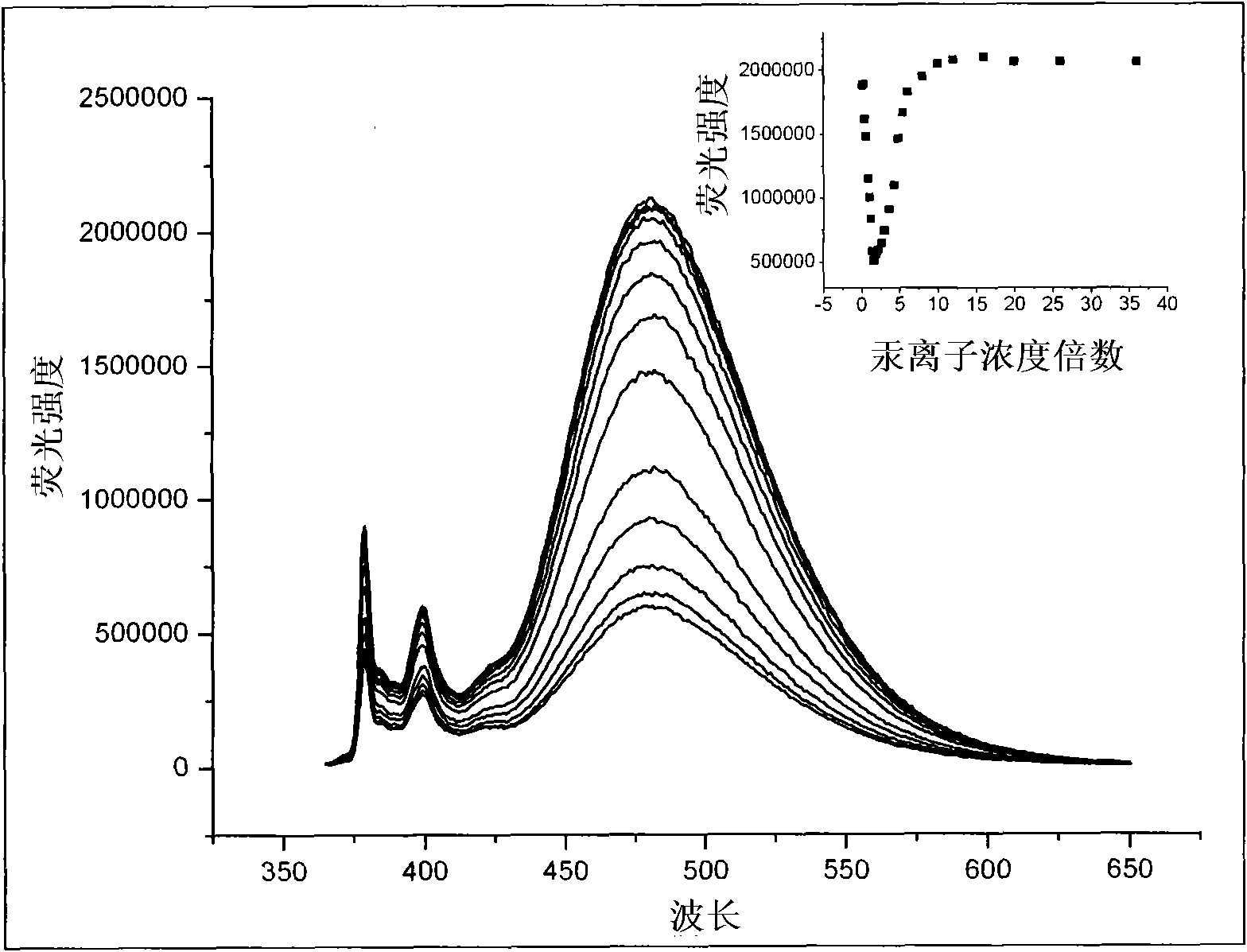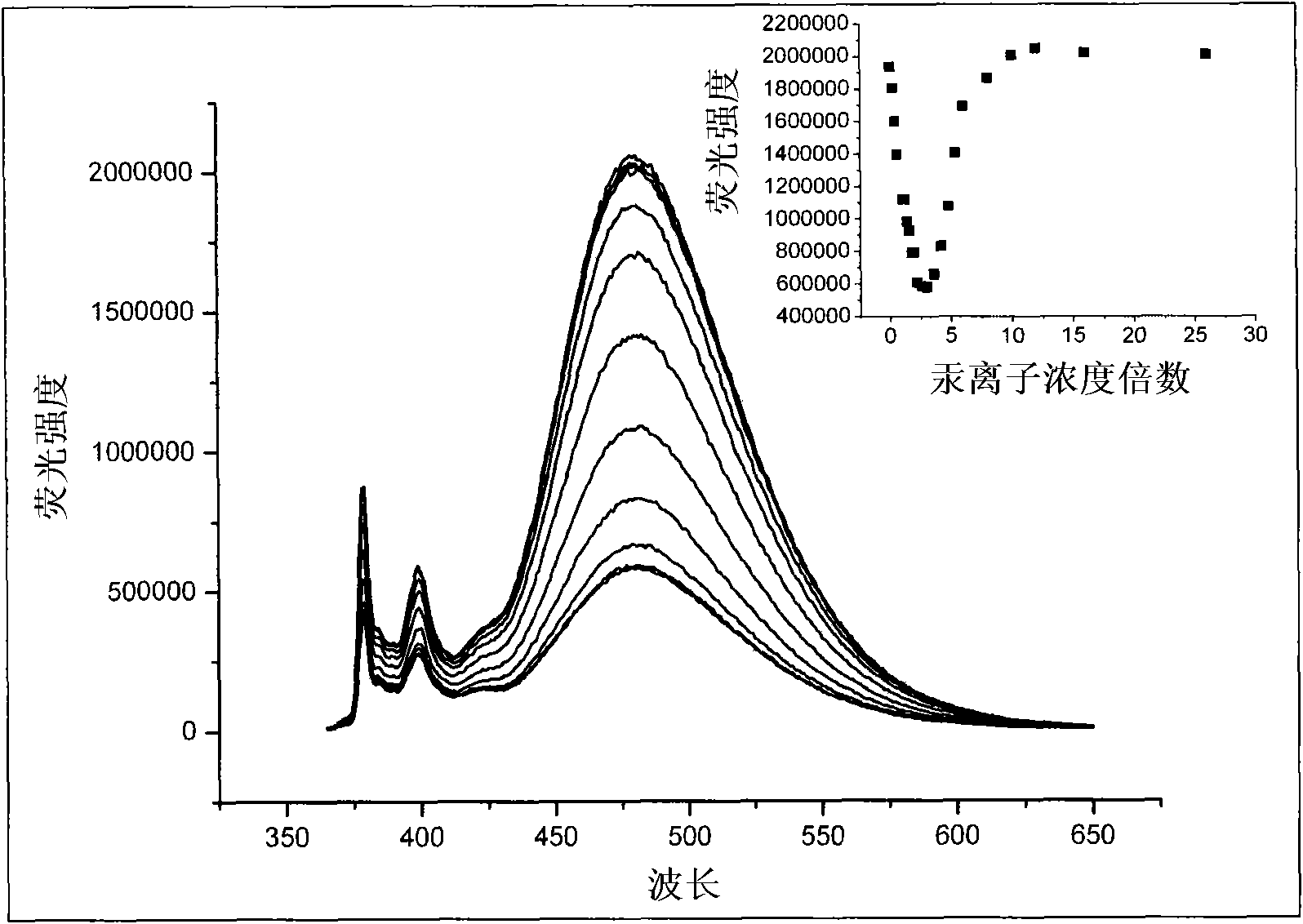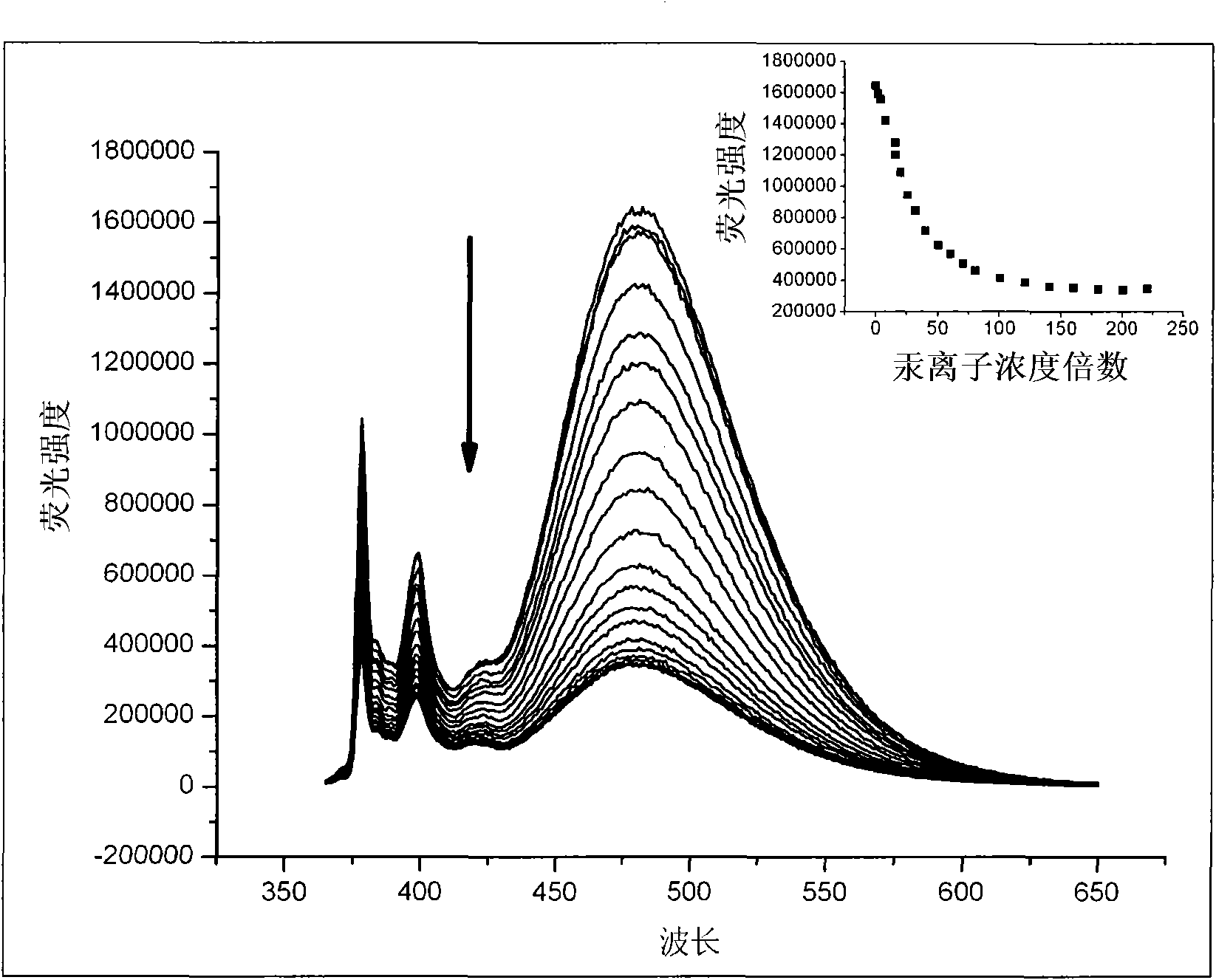Application of neutral anion fluorescent chemical sensor
A chemical sensor, anion technology, applied in scientific instruments, fluorescence/phosphorescence, instruments, etc., can solve the problems of difficult to exclude silver ion interference, difficult to exclude copper ion interference, etc., to overcome the effect of silver ion and copper ion interference
- Summary
- Abstract
- Description
- Claims
- Application Information
AI Technical Summary
Problems solved by technology
Method used
Image
Examples
Embodiment 1
[0037] Application of a neutral anion fluorescent chemical sensor containing long-chain pyrene groups on C7 and C24 and thiourea groups on C3 and C24 in the fluorescence detection of mercury ions (antibody anion is perchlorate)
[0038] In dimethyl sulfoxide (DMSO) solution, prepare a series of the neutral anion fluorescent chemical sensor concentration fixed (5.0×10 -6 mol L -1 ) and the concentration of mercury ions (antibody anion is perchlorate) is changed, and its fluorescence spectrum is measured after standing for 1 hour. It was found that when the concentration of mercury ions gradually increased from 0 times to 2 times that of the anion acceptor, the intensity of the anion acceptor fluorescence (the fluorescence of the excimer association formed by the interaction of two fluorescent groups, at about 478nm) occurred by about 90% When the concentration of mercury ions continues to increase to 10 times, the fluorescence intensity gradually increases and recovers until i...
Embodiment 2
[0040] Application of a neutral anion fluorescent chemical sensor containing long-chain pyrene groups on C7 and C24 and thiourea groups on C3 and C24 in the fluorescence detection of mercury ions (antibody anion is acetate)
[0041] In dimethyl sulfoxide (DMSO) solution, prepare a series of neutral anion fluorescent chemical sensor concentration fixed (5.0×10 -6 mol L -1 ) and the concentration of mercury ions (antibody anion is acetate) is changed, and the fluorescence spectrum is measured after standing for 1 hour. It was found that when the mercury ion concentration gradually increased from 0 times to 2 times that of the anion acceptor, the fluorescence of the anion acceptor (the fluorescence of the excimer association formed by the interaction of two fluorescent groups, at about 478nm) intensity occurred at about 90 % quenching, when the concentration of mercury ions continues to increase to 10 times, the fluorescence intensity gradually increases and restores until it re...
Embodiment 3
[0043] Application of a neutral anion fluorescent chemical sensor containing long-chain pyrene groups on C7 and C24 and thiourea groups on C3 and C24 in the fluorescence detection of mercury ions (antibody anions are chloride ions)
[0044] In dimethyl sulfoxide (DMSO) solution, prepare a series of neutral anion fluorescent chemical sensor concentration fixed (5.0×10 -6 mol L -1 ) and the concentration of mercury ions (antibody anion is chloride ion) is changed, and the fluorescence spectrum is measured after standing for 1 hour. It was found that when the mercury ion concentration gradually increased from 0 times to 100 times that of the anion acceptor, the fluorescence of the anion acceptor (the fluorescence of the excimer association formed by the interaction of two fluorescent groups, at about 478nm) intensity occurred by 90% Quenching, when the concentration of mercury ions continues to increase to 200 times, its fluorescence intensity hardly changes, that is, when the a...
PUM
| Property | Measurement | Unit |
|---|---|---|
| Sensitivity | aaaaa | aaaaa |
Abstract
Description
Claims
Application Information
 Login to View More
Login to View More - R&D
- Intellectual Property
- Life Sciences
- Materials
- Tech Scout
- Unparalleled Data Quality
- Higher Quality Content
- 60% Fewer Hallucinations
Browse by: Latest US Patents, China's latest patents, Technical Efficacy Thesaurus, Application Domain, Technology Topic, Popular Technical Reports.
© 2025 PatSnap. All rights reserved.Legal|Privacy policy|Modern Slavery Act Transparency Statement|Sitemap|About US| Contact US: help@patsnap.com



